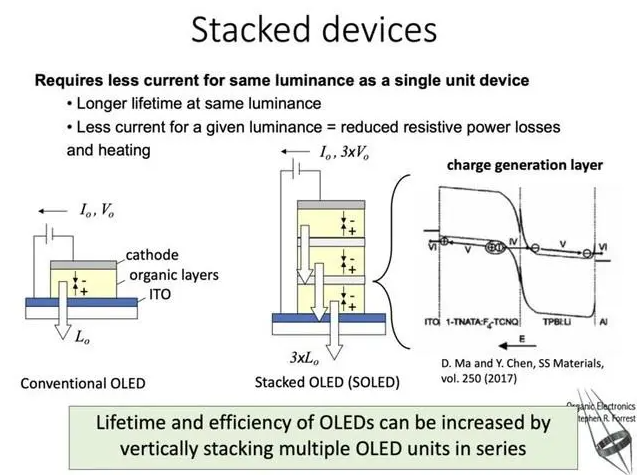
Two professors from the University of Michigan announced at the Display Week conference in Los Angeles that organic self-luminous diode (OLED) screens have a theoretical lifespan of 100 years. They pointed out that the OLED screen consists of red, green and blue parts and does not require a liquid crystal layer and backlight layer, and can emit light on its own.
According to reports, the OLED screen has a switching light-emitting properties, that is, when the power is turned on to show the brightness, and after the power is cut off, there is no light output. The brightness of this screen is proportional to the power-on time, the longer the power-on time, the higher the brightness. The two professors said that in terms of durability, the green diode is the most durable, while the blue diode has the lowest durability. However, if the effect of the blue diode is not taken into account, the theoretical lifetime of an OLED panel can be more than 100 years, or about 1 million hours.
The professors said that this data is based on laboratory aging tests they conducted. Although current OLED technology has significantly reduced the use of blue diodes, it cannot be completely eliminated. It is worth noting that OLED technology has been in development for 35 years.
The announcement of this theoretical lifetime is positive for the future development of OLED technology. As more and more devices adopt OLED screens, consumers can be more confident in using this technology because it has a long life and provides a quality display.
The 8 inch displays might be affected and delay for an accident.
New iPhone 13 Series will use On-Cell OLED Displays. And it that will be launched in the second half of this year will be exclusively supplied by Samsung Display (SDC)
This is the project management of how sinocrystal handle your customized project relate to displays.
Discover the key factors to consider when choosing an LCD display for your project, including size, resolution, interface, brightness, and customization options from a factory-direct manufacturer.
Discover the latest innovations in rugged LCD displays for harsh environments — from extreme temperature resistance to sunlight readability and waterproof designs. Factory-direct manufacturing with full customization.
A complete guide to LCD display connection methods, including SPI, I2C, RGB, MIPI, LVDS interfaces and physical mounting options. Learn how to connect monochrome and TFT LCDs to your development board or product housing.
This week, we had the pleasure of hosting an esteemed international client at our LCD display manufacturing facility in Dongguan. Guided by our team, the client visited key production areas such as the fully automated COG bonding line, backlight assembly area, full lamination workshop, and final product aging test section. They highly appreciated our production capacity, strict quality control, and engineering expertise. This visit strengthened mutual trust and set the stage for future collabora